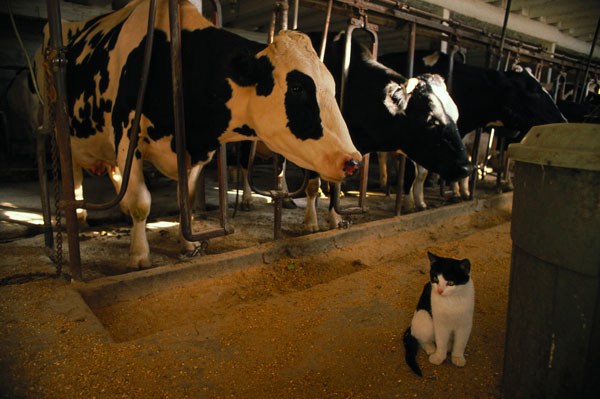
While Texas State Veterinarian Dr. Dee Ellis says this week's confirmation of Cattle tuberculosis (TB) in dairy herds at two Panhandle facilities is not expected to affect Texas' TB-free status, animal health officials say they will immediately begin testing dairy, calf-raising and dairy heifer-raising operations in Texas and other states with epidemiological links to the infected herds to determine the possible origin and the potential for spread of the disease.
The Texas Animal Health Commission (TAHC) announced the news this week (Jan. 13) after a federal testing laboratory confirmed cattle from two dairies in Castro County tested positive for the disease.
A comprehensive and effective animal health surveillance system developed by TAHC is being credited with quick identification and confirmation of the infected animals.
"The detection of these new herds simply indicates our strong surveillance system is effective. The TAHC is working closely with the dairies involved and the Texas dairy industry to ensure the disease is quickly contained and the affected dairies can return to normal business practices as soon as possible," Ellis said.
For the latest on southwest agriculture, please check out Southwest Farm Press Daily and receive the latest news right to your inbox.
Cattle tuberculosis is a chronic, debilitating disease of cattle caused by the bacterium Mycobacterium bovis. Human tuberculosis is caused by a closely related type of bacteria and was historically known as "consumption." A variety of other species may be susceptible to cattle tuberculosis, including captive elk and exotic deer, bison, goats, swine, humans and cats. Sheep and horses are rarely affected.
Symptoms
Cattle tuberculosis is primarily a respiratory disease affecting lungs and chest lymph nodes. Symptoms can include progressive weight loss, chronic cough, and unexplained death losses.
Tuberculosis has a long incubation period (months to years) and was once the most prevalent infectious disease of cattle and swine in the United States. Bovine TB caused more losses among U.S. farm animals in the early part of the 20th century than all other infectious diseases combined. Through a cooperative state-federal program, bovine tuberculosis has been nearly eradicated from livestock in the United States. Texas has been declared free of TB, but constant vigilance is crucial to maintaining that TB-free status.
While the TABC announcement provided few details about the latest confirmed cases, a USDA-APHIS Cattle TB monthly update posted in November (2014) indicates dairy cattle from a Texas dairy were suspected of M. Bovis tuberculosis in early testing at time of slaughter and that the case was "pending."
In that same federal update, a new case in a steer slaughtered in Texas was detected in November. Tissues were compatible for mycobacteriosis by histology and PCR (Polymerase Chain Reaction) was positive for Mycobacterium tuberculosis complex. Culture and genotyping were listed as pending. The update indicated the animal came from a lot of Mexican-origin cattle, but did not have official Mexican animal identification present at the time of slaughter.
So far USDA-APHIS has not acknowledged there a connection between the cases confirmed this week and those listed in the November monthly TB update.
In 2000, Texas won a battle against cattle TB, earning the U.S. Department of agriculture’s TB accredited-free status. In 2002, however, that status was revoked when two infected cattle herds were detected. After extensive testing, Texas regained its TB-free status from USDA in October 2006. This effort included testing 2,014 purebred beef operations and all 818 of the state’s dairies. Slaughter surveillance was also greatly enhanced at that time to ensure that any remaining TB infected herds would be detected.
Cattle TB is most often detected through carcass inspection at slaughter plants. Internal lesions that are identified by inspectors are collected and forwarded to a laboratory for confirmation of the disease. Efforts are made to track or “trace” the animal back to its herd of origin so that herd-mates or other exposed cattle can be tested.
Following the last TB incidents, TAHC effected several regulation changes to aid in tracing exposed or diseased animals and to help guard against re-introduction of TB.
Because of wide-scale problems with cattle TB in Mexico, as part of those rule changes, all Mexican-origin cattle are required to be retested 60 to 120 days after entry into Texas from Mexico by a Texas veterinarian. They must also receive a permit prior to entry into Texas from another state. In addition, such cattle originating in Mexico must have an official permanent form of identification and be listed individually on a health certificate prior to entry, and they must possess a current negative TB test performed within the previous12 months at all times.
For information about TB in the Panhandle, contact the Region 1 office at 1-806-354-9335. For general information about TB, call 1-800-550-8242 or visit.
About the Author(s)
You May Also Like




